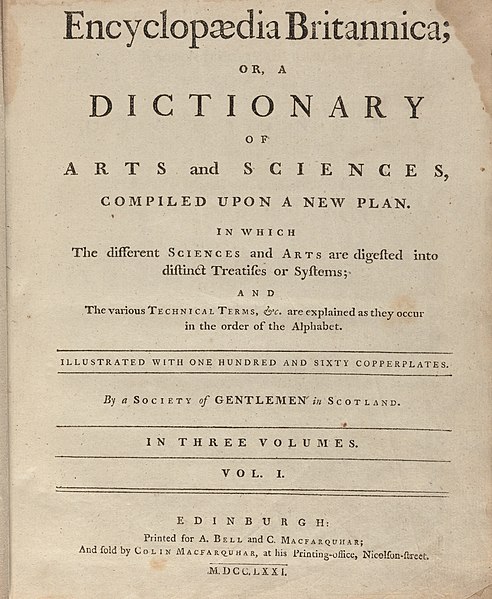Encyclopædia Britannica Eleventh Edition
The Encyclopædia Britannica Eleventh Edition (1910–1911) is a 29-volume reference work, an edition of the real Encyclopædia Britannica. It was developed during the encyclopaedia's transition from a British to an American publication. Some of its articles were written by the best-known scholars of the time. This edition of the encyclopaedia, containing 40,000 entries, has entered the public domain and is readily available on the Internet. Its use in modern scholarship and as a reliable source has been deemed problematic due to the outdated nature of some of its content. Modern scholars have deemed some articles as cultural artifacts of the 19th and early 20th centuries. Additionally, the 11th edition has retained considerable value as a time capsule of scientific and historical information, as well as scholarly attitudes of the era immediately preceding World War I.
Encyclopædia Britannica Eleventh Edition
1913 advertisement for the eleventh edition
The Encyclopædia Britannica is a general knowledge English-language encyclopaedia. It has been published by Encyclopædia Britannica, Inc. since 1768, although the company has changed ownership seven times. The encyclopaedia is maintained by about 100 full-time editors and more than 4,000 contributors. The 2010 version of the 15th edition, which spans 32 volumes and 32,640 pages, was the last printed edition. Since 2016, it has been published exclusively as an online encyclopaedia.
The 15th edition of the Britannica; the initial volume with the green spine is the Propædia; the red-spined and black-spined volumes are the Micropædia and the Macropædia, respectively. The last three volumes are the 2002 Book of the Year (black spine) and the two-volume index (cyan spine).
Children's Britannica
Thomas Spencer Baynes, editor of the 9th edition. This portrait, painted in 1888, hangs in the Senate Room of the University of St Andrews.
The title page of the first edition of the Encyclopædia Britannica, published in 1771






